#indigenous america
Photo

Kiowa life in early to mid 20th century southwest Oklahoma, told/revealed/explained by Henrietta Tongkeamha and her son, Raymond Tongkeamha - - pictured above.
(via 9781496228116.jpg (1650×2550))
#Benjamin R. Kracht#Henrietta Tongkeamha#Raymond Tongkeamha#Kiowa Indian Nation#Anthropology#Indigenous America
51 notes
·
View notes
Note
What's 2spirit I hear it a lot but never found out the meaning
(I'm bad at explaining things, so I apologize if this seems like a bad explanation-)
Basically two-spirit is an Indigenous American identity used for people who don't identify as male or female.
It's not very talked about because of what the European colonizers and white America did.
(Gonna put a trigger warning for genocide, racism, and queerphobia for this section)
One method the white Americans tried to get rid of two-spirit people, specifically two-spirit youth, was the boarding schools. It was heavily frowned upon for not fitting with white people (Specifically Cishet christian) norms. Meanwhile a method European Colonizers used was throwing two-spirit people in pits that contained starving dogs.
Back to the topic of boarding schools. Because America was trying to make sure that us Indigenous Americans wouldn't survive, most tribes were forced to adopt queerphobic Christian standards, and that caused two-spirit people to be erased from many of their cultures.
I'm still educating myself because unfortunately I didn't grow up in my culture (Mostly grew up white because my grandmother was born a year before ICWA was passed :/) so my knowledge isn't that good, but this article also explains two-spirit identities, and it contains the personal experience of someone who is two-spirit.
Once again, I apologize if my explanation was bad. But I do hope this somewhat helps.
#cw genocide#cw queerphobia#cw racism#two spirit history#two spirit#2 spirit#2-spirit#two-spirit#lgbtqia2s+#2slgbtqia+#lgbtqia+#lgbtqi+#lgbtq+#lgbt+#indigenous american#indigenous america
6 notes
·
View notes
Text
youtube
La tonada del Chimo -- a religious song in muchik, an indigenous language spoken until the 20th century in what is now the northern coast of Peru.
Compiled by Baltasar Jaime Martínez de Compañón, bishop of Trujillo ca. 1782-85.
17 notes
·
View notes
Text
Useful background for allies who want to help debunk white, evangelical Christian objections to ICWA that claim reverse racism. It also explains why the foster system's definition of family doesn't meld well with indigenous views, and can be weaponized against native people in order to remove children.
#ICWA#Indian Children's Welfare Act#Anerican Indians#American Indian history#Indigenous America#NDNs
10 notes
·
View notes
Text
While the allies were fighting against Hitler and his regime, who wanted a white blue eyed race, the church was erasing Indigenous cultures and taking Indigenous children from their families to westernise them (aka, to make them blue eyed). If you were against Hitler, you should be against the westernising of Indigenous cultures.
Both events in history should be taught as both events are atrocious.
#indigenous#racism#colonialism#fascism#hitler#ww2#stolen generations#history#indigenous australians#indigenous australia#indigenous americans#indigenous america#murder#crime#indigenous rights#human rights#war crimes
2 notes
·
View notes
Text

In honor of Women’s History month BLM Idaho would like to honor an indigenous American heroine, 𝐒𝐚𝐜𝐚𝐣𝐚𝐰𝐞𝐚 (pronounced Sack-ah-jah-WEE-a).
Before Idaho was even a territory, Sacajawea was born in the Lemhi River Valley in the late 1780s. The Lemhi River Valley during this period was inhabited by the Agaidika (Salmon-eater) Shoshone. Around the age of 12, Sacajawea was with her tribe hunting bison in the Three Forks area of the Missouri River when she was captured by a raiding party from another tribe. She was later traded to the Hidatsa tribe in present day North Dakota. She learned to speak the language of the Hidatsa and lived with the tribe for a few years. Once more she was traded, this time to French trapper Toussaint Charbonneau, and married him.
In the winter of 1805 while the Lewis and Clark Expedition wintered at Fort Mandan, Charbonneau, and subsequently Sacajawea, were hired to help the expedition on its westward journey. During the winter Sacajawea gave birth to her son, Jean Baptiste Charbonneau. In May of that year, Sacajawea and her infant child set forth as part of the Expedition west.
On August 12, 1805, Meriwether Lewis and his men climbed the eastern slopes of the continental divide, and stood on what is now known as Lemhi Pass, viewing the birthplace of Sacajawea below to the west. Just five days later, Clark noted the reuniting of Sacajawea, her people, and her brother who was now a chief of the Agaidika.
Sacajawea provided lifesaving information regarding local tribes, edible foods, indigenous medicines, and the mostly unknown Idaho and Montana landscapes. Her ability to interpret and her relation to the tribes helped the Expedition acquire horses and supplies from the Agaidika people to continue on their journey west when supplies and spirits were low.
Today the Salmon Field Office administers many of the lands formerly occupied by the Agaidika. Salmon landmarks such as the Sacajawea Center, and birthplace monument honor her and her people’s contributions to American History.
#american history#history#lewis and clark#expedition#sacajawea#continental divide#agaidika#indigenous#salmon#Shoshone#indigenous america#lemhi river valley
1 note
·
View note
Text
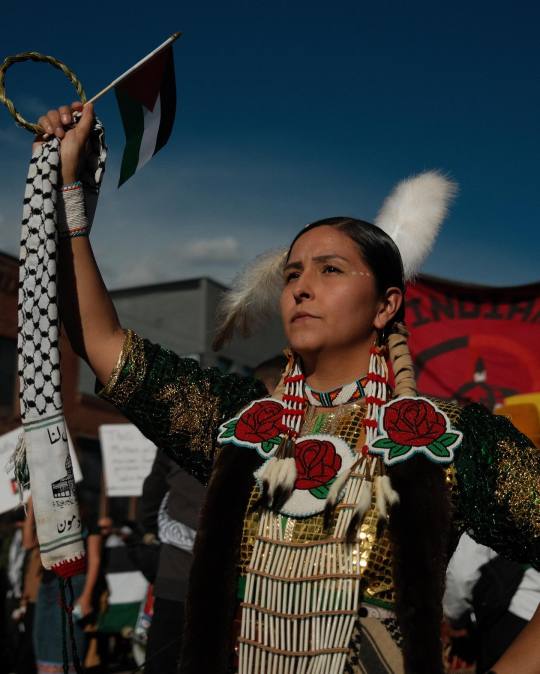

Native Americans march in solidarity with Palestine
Denver, Colorado USA
© Malek Asfeer
#Photography#People#Native American#Indigenous#USA#Palestine#Palestinian#Arab#America#American#Dener#Colorado#Folk dress
21K notes
·
View notes
Text
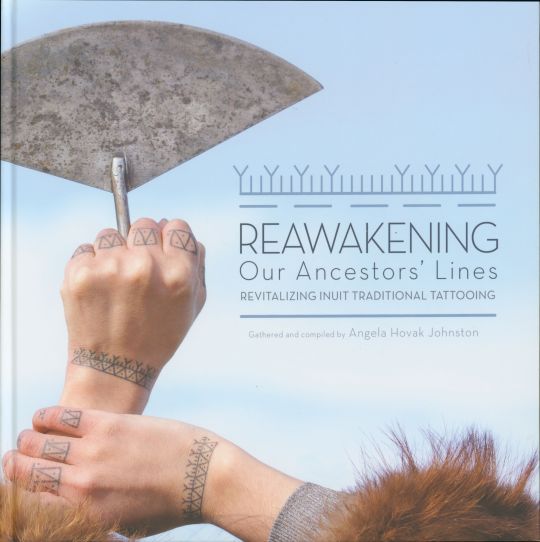

The author, Angela Hovak Johnston.

Johnston and Marjorie Tungwenuk Tahbone, traditional tattoo artist.
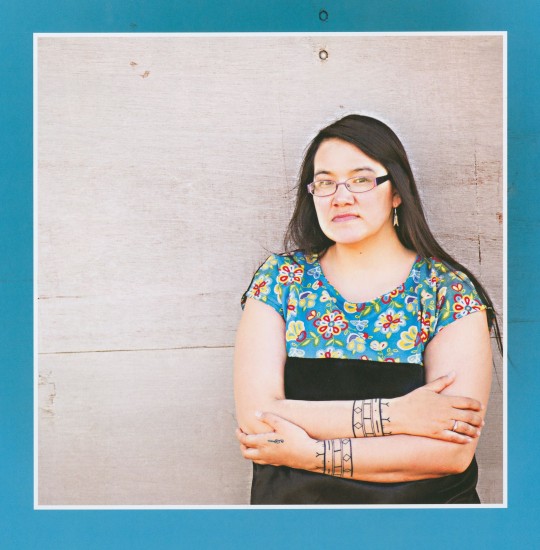
Catherine Niptanatiak: "I designed my own, something that represents me and who I am, something that I would be proud to wear and show off, and something that would make me feel confident and beautiful. . . . I have daughters and I would like to teach them what I know. I would like for them to want to practice our traditions and keep our culture alive."
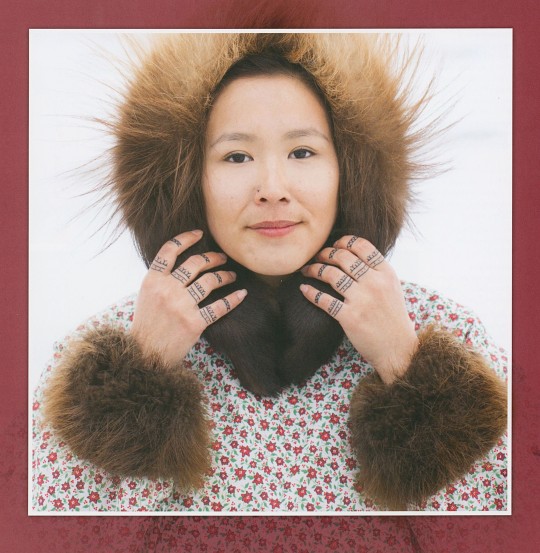
Cecile Nelvana Lyall: "On my hand tattoos, from the top down, the triangles represent the mountains. . . . The Ys are the tools used in seal hunting. . . . The dots are my ancestors. . . . I am so excited to be able to truly call myself and Inuk woman."
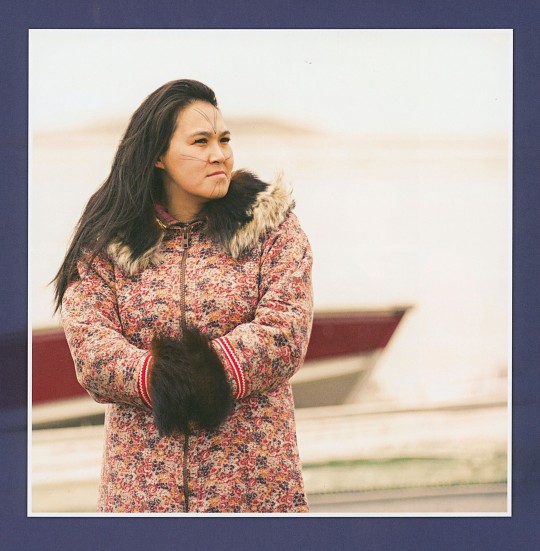
Colleen Nivingalok: "The tattoos on my face represent my family and me. The lines on my chin are my four children -- my two older boys on the outside protecting my daughters. The lines on my cheeks represent the two boys and the two girls on either side. The one on my forehead represents their father and me. Together, we live for our children."
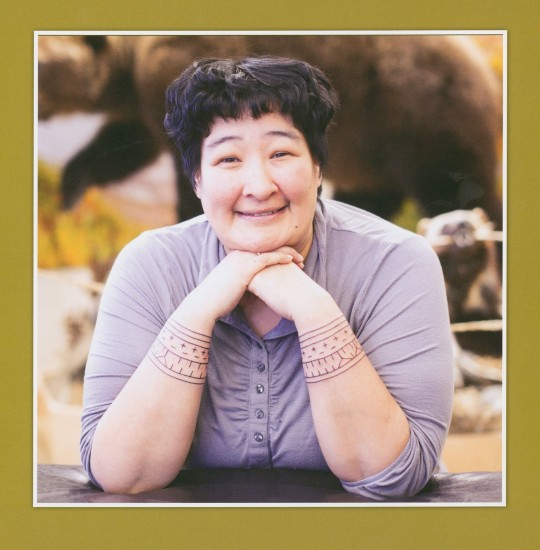
Doreen Ayalikyoak Evyagotailak: "I have thought about getting traditional tattoos since I was a teenager. . . . When I asked the elders if I could have my own meaning for my tattoos, they said it wouldn't matter. My tattoos symbolize my kids."
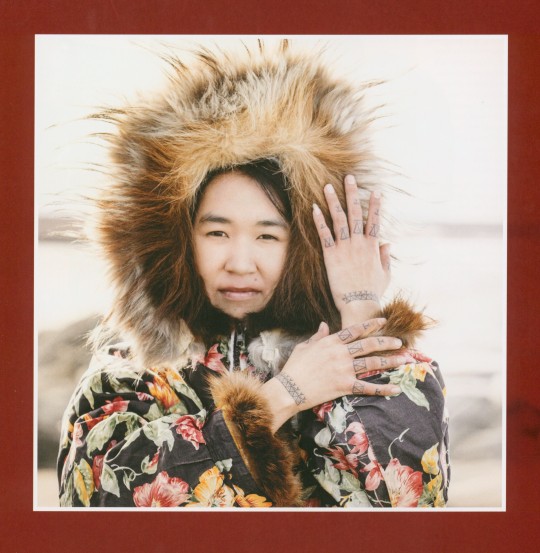
Mary Angele Takletok: "I always wanted traditional tattoos like the women in the old days. I wanted them on my wrists and my fingers so I could show I'm Inuk."

Melissa MacDonald Hinanik: "As a part of celebrating my heritage and revitalizing important traditional customs that form my identity, I believe I have earned my tattoos. I am a beautiful, strong young woman. I am a mother, a wife, a daughter, a friend, and an active community member. I reclaim the traditional customs as mine, I re-own them as a part of who I am."
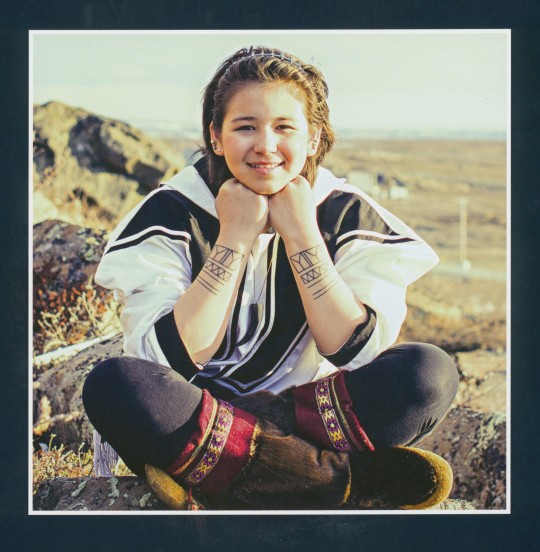
Star Westwood: "We still have some of our culture, but some things are slowly dying. Having tattoos helps us keep our culture alive. . . . . My tattoos represent my dad and my dad's dad. The ones closest to my wrists represent my sisters."
------------------------------------------------------------------------------
National Tattoo Day
July 17 is National Tattoo Day. To celebrate, we present some images from Reawakening Our Ancestors' Lines: Revitalizing Inuit Traditional Tattooing, compiled by Angela Hovak Johnston, co-founder with Marjorie Tahbone of the Inuit Tattoo Revitalization Project, with photographs by Inuit photographer Cora DeVos, and published in Iqaluit, Nunavut by Inhabit Media Inc. in 2017.
For thousands of years, Inuit have practiced the traditional art of tattooing. Created the ancient way, with bone needles and caribou sinew soaked in seal oil, sod, or soot, these tattoos were an important tradition for many Inuit women, symbols etched on their skin that connected them to their families and communities. But with the rise of missionaries and residential schools in the North, the tradition of tattooing was almost lost. In 2005, when Angela Hovak Johnston heard that the last Inuk woman tattooed in the old way had died, she set out to tattoo herself in tribute to this ancient custom and learn how to tattoo others. What was at first a personal quest became a project to bring the art of traditional tattooing back to Inuit women across Nunavut.
Collected in this book are photos and stories from more than two dozen women who participated in Johnston's project. Together, these women have united to bring to life an ancient tradition, reawakening their ancestors' lines and sharing this knowledge with future generations. Hovak Johnston writes: "Never again will these Inuit traditions be close to extinction, or only a part of history you read about in books. This is my mission."
Reawakening Our Ancestors' Lines forms part of our Indigenous America Literature Collection.
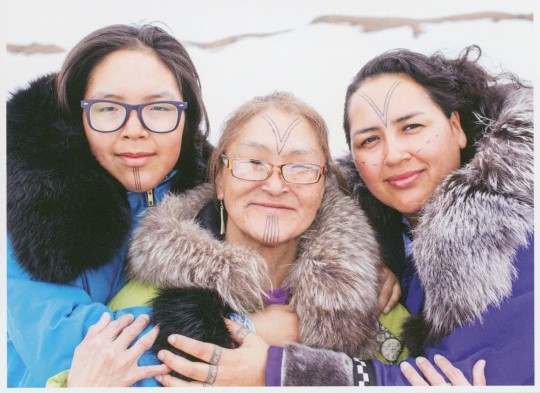
Angela Hovak Johnston (right) with her cousin Janelle Angulalik and her aunt Millie Navalik Angulalik.
View other posts from our Indigenous America Literature Collection.
#National Tattoo Day#tattoos#holidays#Inuit traditional tattoos#Inuit tattoos#Inuit#Inuk#Reawakening Our Ancestors' Lines#Angela Hovak Johnston#Cora DeVos#Cora Kavyaktok#Marjorie Tahbone#Inuit Tattoo Revitalization Project#Inhabit Media Inc.#photographs#Inuit women#Indigenous America Literature Collection#Native American Literature Collection
2K notes
·
View notes
Text
Americans not giving a shit about the wildfires burning down forests and homes in Canada until smoke starts spreading across the border. Meanwhile Indigenous communities across the country are far more likely to be impacted by the fires and I’ve seen all of one link to a charity and about nine million memes. 🙃
#yeah yeah hashtag notallamericans or whatever the fuck#I’m just irritated watching people whine or centre themselves#like sorry your clothes smell like smoke gladys but people have lost their fucking homes#and the government does fuck all for indigenous communities#so you know who’s gonna end up getting more aid#but sure brad can’t go out for his usual morning jog because of the canadians#also all these fucking news articles making ir about america as if canada has somehow done this on purpose out of spite#someone buy me a punching bag for my birthday thanks#artschoolrambles
18K notes
·
View notes
Text

This is the kind of free thinking Fascists want to crush.
#history#native american#indigenous#antiauthoritarian#antinazi#anti capitalism#earth#america#australia#australian#amerika#americans#class war#classwar#ausgov#politas#auspol#tasgov#taspol#neoliberal capitalism#fuck neoliberals#anthony albanese#albanese government#antifascist#antifaschistische aktion#anti imperialism#anticapitalista#anti capitalist love notes#eat the rich#anarchy
9K notes
·
View notes
Text
I’ve run into a problem in writing this essay.
I am writing about American Indian life, specifically about the importance of tribal museums while referring to the Nanticoke Indian Museum in Delaware. I addressed the false national narrative of every American Indian tribe living in a tipi. But then I realized I spelled it as teepee and that seemed foolish and odd to me. So I consulted Google as it is currently the next best thing. And every dictionary and its grandmother showed up to tell me it was either tepee, teepee, or tipi with different variants splashed here and there. I have reached no conclusive answer and it is too late now as the essay is due. But for future reference, I would really like to know. Any Indigenous people out here able to tell me how it would be spelled if translated to English? Obviously different tribal languages would likely have an alternative spelling, but I want a definitive answer on the word from an English side unless there was never an English translation to begin with and I am just getting the semantics confused. And if there is no one way to spell it according to you guys, then I accept that too. I just want your opinions and knowledge, not what the millions of dictionaries and wikis are telling me. I’m sick of non-Indigenous opinions. And I really hope none of this sounds rude or worse, racist. I genuinely want to know/learn. Hopefully someone sees this :) Thanks! <3
#indigenous america#is it tipi#or is it tepee#or is it teepee#or am i wrong altogether#genuine question#american indian#doing college history work#phew it is a lot to learn#language#need help#anyone know?
1 note
·
View note
Text
The Bolivian masses flooded the streets of La Paz and sent the military packing, crushing an attempted right-wing coup.
It CAN be done. We CAN win.
1K notes
·
View notes
Text
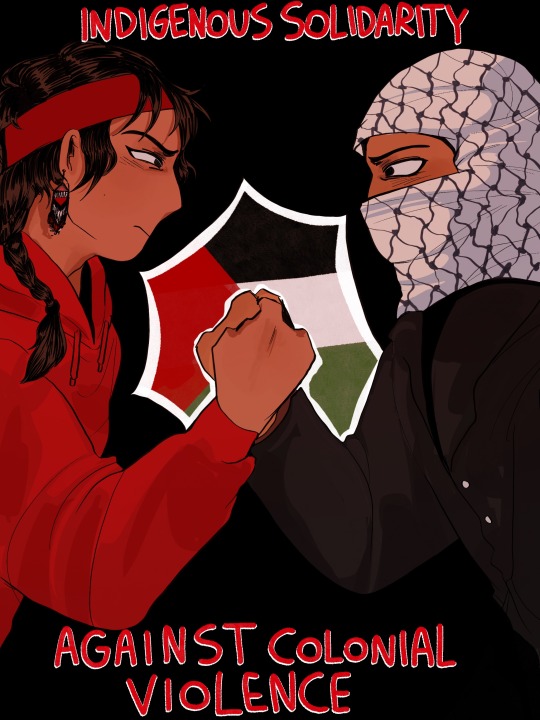
landback everywhere
#free palestine#palestine#ndn#indigenous artist#indigenous solidarity#death to israel#death to america#free gaza#indigenous rights#As a native if you are a native and not supporting Palestine then you are no better than the white man#I mean that#Look your ancestors in the eye and tell them you support a colonial genocide
2K notes
·
View notes
Text
And we wouldn’t have to pay to see ourselves in museums.
Source
#indigenous#native#land back#first nations#native people#native american#mesoamerica#indigena#native america#turtle island#ndn tumblr#1492#ndn#n8v#ndn tag#decolonize#videos
702 notes
·
View notes
Text
gotta say, theres something really weird about how online queer spaces pretend that intersex people dont exist. even american queer rights orgs seem to ignore us. and then i see kiwi sites on queer communities and theres comparatively a lot of intersex stuff. i go to a local nurses office and intersex people are included in a pamphlet on representation in books. every queer rights org has a link to to sites for intersex rights. am i crazy or is america falling behind? its quite... concerning
#intersex#queer#in the same train of thought#american media is strangely devoid of indigenous representation#for most of my life#the majority of media i have engaged in#is american#yet i didnt find any native american characters outside westerns#until i read heros of olympus#Piper is the only native american character ive ever seen#outside media set in the 1800s#compare that to media in aotearoa#where theres hakas on tv#just because thats part of aotearoa#not trying to brag#but america is falling behind
558 notes
·
View notes
Text
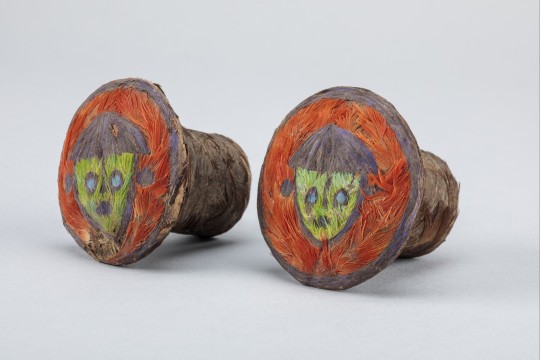
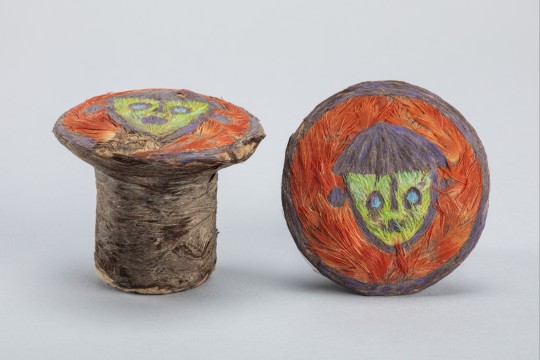
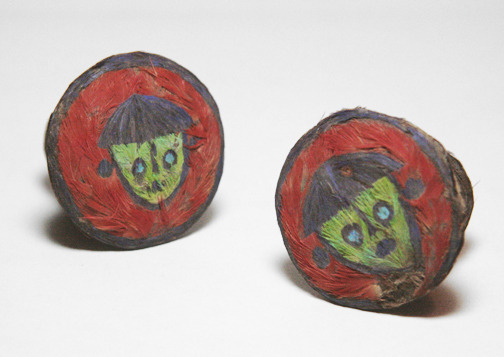
~ Pair of Ear Spools.
Date: A.D. 1000-1470
Place of origin: Central Coast, Perú
Culture: Chancay or Inca
Period: Late Intermediate-Late Horizon
Medium: Feathers, adhesive, gourd, and leather.
#history#museum#archeology#archaeology#pre columbian#12th century#15th century#peruvian#peru#south america#pair of ear spools#chancay#inca#indigenous#central coast#horizon period#intermediate period#feathers#a.d. 1000#a.d. 1470
562 notes
·
View notes